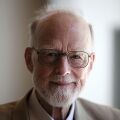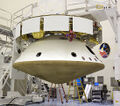Template:Selected anniversaries/January 11: Difference between revisions
No edit summary |
No edit summary |
||
| Line 1: | Line 1: | ||
<gallery> | <gallery> | ||
File:Pedro Nunes.png|link=Pedro Nunes (nonfiction)|1502: Mathematician, cosmographer, and academic [[Pedro Nunes (nonfiction)|Pedro Nunes]] born. He will be one of the greatest mathematicians of his time, known for his mathematical approach to navigation and cartography. | File:Pedro Nunes.png|link=Pedro Nunes (nonfiction)|1502: Mathematician, cosmographer, and academic [[Pedro Nunes (nonfiction)|Pedro Nunes]] born. He will be one of the greatest mathematicians of his time, known for his mathematical approach to navigation and cartography. | ||
File:Pierre de Fermat.jpg|link=Pierre de Fermat (nonfiction)|1664: Mathematician and crime-fighter [[Pierre de Fermat (nonfiction)|Pierre de Fermat]] publishes an original [[Gnomon algorithm function which locates the greatest and the smallest ordinates of curved [[crimes against mathematical constants]]. | |||
File:English Lottery 1566 Scroll.jpg|link=Lottery (nonfiction)|1569: First recorded [[Lottery (nonfiction)|lottery]] in England. | File:English Lottery 1566 Scroll.jpg|link=Lottery (nonfiction)|1569: First recorded [[Lottery (nonfiction)|lottery]] in England. | ||
Revision as of 20:38, 21 January 2018
1502: Mathematician, cosmographer, and academic Pedro Nunes born. He will be one of the greatest mathematicians of his time, known for his mathematical approach to navigation and cartography.
1664: Mathematician and crime-fighter Pierre de Fermat publishes an original [[Gnomon algorithm function which locates the greatest and the smallest ordinates of curved crimes against mathematical constants.
1569: First recorded lottery in England.
1570: Didacus automaton uses Gnomon algorithm to predict winning lottery numbers.
1638: Scientist and bishop Niels Steensen born. He will question explanations for tear production, the idea that fossils grow in the ground.
1711: Inventor and priest Bartolomeu de Gusmão collaborates with Didacus automaton on design of new airship.
1757: engineer and naval architect Samuel Bentham born. He will design the first Panopticon.
1934: Computer scientist Tony Hoare born. He will go on to invent the quicksort algorithm, and make other contributions to computer science.
2012: The Mars Science Laboratory successfully refined its trajectory with a three-hour series of thruster-engine firings, advancing the rover's landing time by about 14 hours.
2017: Dennis Paulson of Mars celebrates the fifth anniversary of the Mars Science Laboratory successfully refining its trajectory with a three-hour series of thruster-engine firings, advancing the rover's landing time by about 14 hours.









